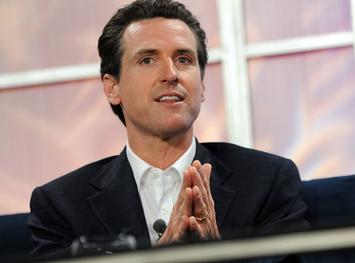
When he takes office this January, as seems inevitable, Gavin Newsom, a self-styled futurist, will inherit an economic legacy that could be turning sour. After a rapid expansion that seemed to make all things possible, Newsom may face challenges for which he may be poorly prepared.
Some of the problem lies in a profound misunderstanding of the recent economic past. With the national media cheerleading for resistance central, California’s political leaders act as if they have essentially solved the basic issue of economic growth even while imposing draconian environmental legislation. Echoing Lincoln Steffens’ observations of Lenin’s Russia, the predominant view in the media, and inside Sacramento, has been “I have seen the future — and it works.”
An unbalanced recovery
Yet in reality, California’s post- 2010 recovery has not worked for most Californians. Instead, as a new Chapman University study reveals, it has been — in contrast to previous expansions — remarkably concentrated not only in terms of geography, but industrial sector, race and class.
This contrasts with the state’s last expansion, which took place between 1997 and 2007, and greatly benefited places like the Central Valley and Inland Empire. Job opportunities opened to a broad spectrum of Californians. Between 1997 and 2007, California added 2.2 million jobs, spread across the state; in the past decade, the growth was 1.3 million, with almost all the high-wage growth, some 91 percent, concentrated in the Bay Area.
This current “boom” also has been far less, if you will, democratic. Many key blue-collar industries, notably manufacturing in Los Angeles, have shrunk even as industrial employment has soared elsewhere in the country. Essentially as the rest of the state has stagnated, the Bay Area luxuriated in the unprecedented emergence of handful of extraordinarily profitable digitally based companies unmatched anywhere else.
The abandoned middle and working classes
The poor have fared poorly in this “boom,” with California now having the highest poverty rate in the country. Soaring real estate prices, a boon to the already affluent, have driven the working and middle class out of the housing market. For others soaring rents have deepened poverty as the real wages for all but the highest-paid have declined in real terms. California is also experiencing a surge in homelessness not widely seen in the rest of the country.
So rather than an exemplar of egalitarianism, California now is among the most unequal states in the union. Our progressive paradise now has the highest Gini coefficient — essentially a measurement of the income of the lowest decile against highest — of any state except New York; since 2006 the level of inequality has accelerated far more rapidly than the rest of the nation and now exceeds that of Mexico. In terms of income adjusted for cost of living, Los Angeles, Fresno, Oxnard, San Bernardino-Riverside and Santa Rosa rank right near the bottom of the nation’s 107 largest metro areas.
Meanwhile, the state’s percentage of middle-income earners — people making between $75,000 and $125,000 — has fallen well below the national average, notes the California Budget and Policy Center. The middle class in California, according to a new analysis by Chapman’s Marshall Toplansky and his team, is contending with a debt burden, due to high taxes and housing costs, well above the national average and more than twice as much as Texans.
Welcome to the governor’s office
Given the problems associated with a “booming” economy, one has to wonder what happens as it starts to slow. Texas and many other states are now experiencing far faster GDP growth than California. Net out-migration, already a million over the past decade, is accelerating and nearly half of residents of the state super-star economy, the Bay Area, are looking to the exits.
Perhaps more telling, California — which created barely 800 jobs last month — has not, as some boosters suggest, reached some nirvana of full-employment and fiscal health. In the last quarter the state experienced far lower income growth than most states, and barely half that of Texas, Colorado, Michigan, Arizona, Missouri and Florida.
A slowdown in Silicon Valley, abetted by problems among social media companies like Facebook, could impact tax revenues negatively, ending years of fat annual surpluses. Yet the state, which has boosted its budget almost 60 percent in seven years, still faces the nation’s largest unrestricted net deficit ($169 billion) and even vaster unfunded pension liabilities, earning a 43rd ranking among the states for fiscal health. The greater economic stress also will increase demands for rent control, as well as more spending on subsidies for housing, college and medical care.
In good times, progressives like Newsom could please both oligarch backers and the masses of Democratic voters. But as the legacy of inequality grows, and the rich begin to see their gains slow, Newsom may find himself caught between his financial base and those of his electorate. Newsom, rather the modeling for the man of the future, could be forced to make hard choices for which the media claque, and his political enablers, are not preparing him.
This piece originally appeared in The Orange County Register.
Joel Kotkin is executive editor of NewGeography.com. He is the Roger Hobbs Distinguished Fellow in Urban Studies at Chapman University and executive director of the Houston-based Center for Opportunity Urbanism. His newest book is The Human City: Urbanism for the rest of us. He is also author of The New Class Conflict, The City: A Global History, and The Next Hundred Million: America in 2050. He lives in Orange County, CA.
Photo by JD Lasica from Pleasanton, CA, US (Gavin Newsom) [CC BY 2.0 ], via Wikimedia Commons












